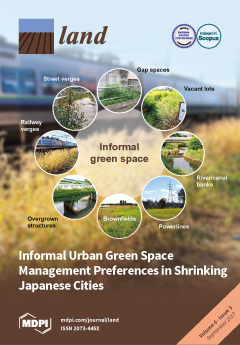Resources
Displaying 1966 - 1970 of 2258High-Resolution Vegetation Mapping in Japan by Combining Sentinel-2 and Landsat 8 Based Multi-Temporal Datasets through Machine Learning and Cross-Validation Approach
This paper presents an evaluation of the multi-source satellite datasets such as Sentinel-2, Landsat-8, and Moderate Resolution Imaging Spectroradiometer (MODIS) with different spatial and temporal resolutions for nationwide vegetation mapping. The random forests based machine learning and cross-validation approach was applied for evaluating the performance of different datasets.
Soy Expansion and Socioeconomic Development in Municipalities of Brazil
Soy occupies the largest area of agricultural land in Brazil, spreading from southern states to the Amazon region. Soy is also the most important agricultural commodity among Brazilian exports affecting food security and land use nationally and internationally. Here we pose the question of whether soy expansion affects only economic growth or whether it also boosts socioeconomic development, fostering education and health improvements in Brazilian municipalities where it is planted.
Vegetation in Drylands: Effects on Wind Flow and Aeolian Sediment Transport
Drylands are characterised by patchy vegetation, erodible surfaces and erosive aeolian processes. Empirical and modelling studies have shown that vegetation elements provide drag on the overlying airflow, thus affecting wind velocity profiles and altering erosive dynamics on desert surfaces. However, these dynamics are significantly complicated by a variety of factors, including turbulence, and vegetation porosity and pliability effects. This has resulted in some uncertainty about the effect of vegetation on sediment transport in drylands.
Comparing Quantity, Allocation and Configuration Accuracy of Multiple Land Change Models
The growing numbers of land change models makes it difficult to select a model at the beginning of an analysis, and is often arbitrary and at the researcher’s discretion. How to select a model at the beginning of an analysis, when multiple are suitable, represents a critical research gap currently understudied, where trade-offs of choosing one model over another are often unknown. Repeatable methods are needed to conduct cross-model comparisons to understand the trade-offs among models when the same calibration and validation data are used.
Land‐Use and Land‐Cover Change in the Páramo of South‐Central Ecuador, 1979–2014
Land use and land cover were mapped between 3500 and 5000 meters above sea level m.a.s.l. in the Río Chambo basin in south-central Ecuador from Landsat MSS, TM, ETM and OLI imagery acquired between 1979 and 2014. The area mapped has been dominated by páramo and a variety of agricultural land uses since 1979. The main land-use transitions have been from páramo to agriculture, native forest to páramo and agriculture, and agriculture back to páramo.


